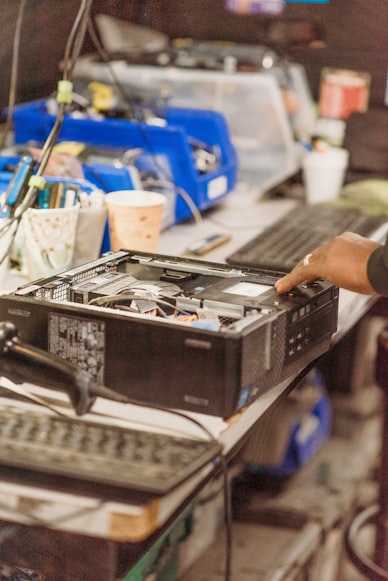Dealing with E-Waste: A Professional’s Guide
It’s hard to imagine a world in which everyone doesn’t own at least one technological device. We can’t help but want cutting-edge gadgets. We immediately upgrade to the newest model of any electronic device when it’s introduced.
Still, that’s no big deal because everybody enjoys modern technology. What’s not okay is to throw away your electronics without considering how to dispose of them properly. Like any other junk removal service, dealing with e-waste is just as important.
What Role Does E-Waste Recycling Play?
The Environmental Protection Agency recommends recycling electrical items such as connectors, entertainment systems, and televisions.
Electronic trash dumped in a landfill might break down into smaller particles than the sludge that usually seeps out of the landfill, a leaching process. Therefore, they pose the greatest threat when buried at a certain depth in a landfill.
Recycling E-Waste: A Step-by-Step Guide
E-waste disposal or recycling can be a difficult task. This is due to the high level of complexity and variety of materials found in e-scraps—including metals, glass, and plastic. Although the specific steps may change, a set sequence is typically involved. What follows, then, is the essential information:
1. Collection and Transportation
When it comes to recycling e-waste, this is step one. As part of this process, recyclers install drop-off kiosks or bins in strategic locations. Recyclers will take the electronics to processing centers when these containers are full.
2. Shredding and Organizing
The e-waste is then shredded and sorted once collected and transported. Shredding electronic waste is necessary for proper disposal. These fragments are dismantled and categorized manually. At this point, waste is often segregated to collect various components, which is notoriously labor-intensive.
Next, the materials are disassembled into individual pieces. Then, each object is classified according to its kind. Reusable products and those that need additional processing are often separated here.
3. Dust Removal
The conveyor belt shakes to distribute the small waste bits evenly. The dispersed bits of e-waste are crushed and smashed into smaller pieces. Here, the dust is collected and disposed of in an eco-friendly manner. This prevents any damage to the environment.
4. Magnetic and Water Separation
Next, a powerful magnet separates the iron and steel from the rest of the trash. Following this, glass and plastic must be separated, which is where water separation comes in. Leads containing glass can be sent to smelters to be recycled into new compact fluorescent light bulbs, cathode ray tubes, and batteries.
5. Waste Stream Cleaning
The next step in cleaning up the trash stream is to track the remaining metals in plastics and remove them.
6. Putting Together Recyclables For Sale
The last step is processing the recovered goods into a marketable form. Materials collected during the previous steps are processed here in preparation for sale as electronic component raw materials.

Are you looking for safe, dependable, efficient, and environmentally friendly e-waste disposal in Lake Nona? Junk Daddy can readily assist you with your e-waste recycling and trash removal.
Contact us to learn more about our junk removal services in Lake Nona.












Leave a Reply